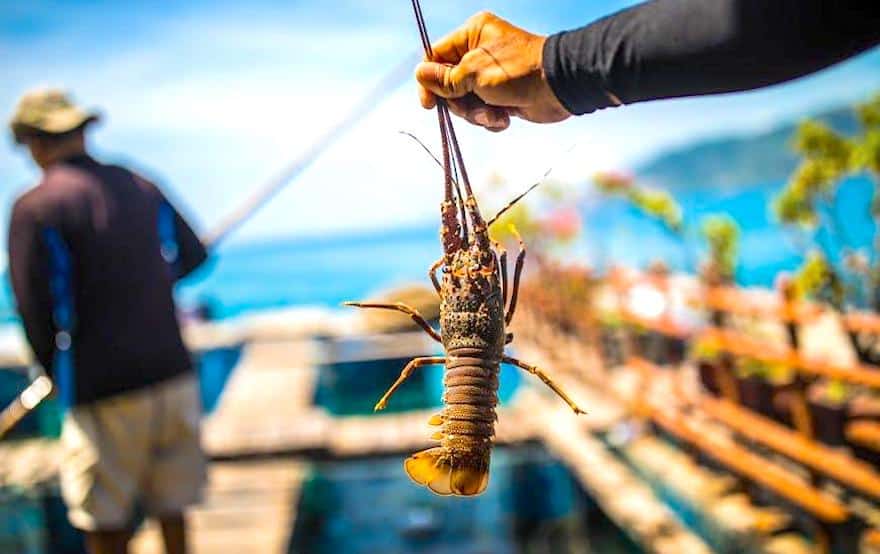AUTHOR
Dr K.N. Saleela
Vizhinjam Regional Centre of CMFRI (ICAR)

Introduction
Mariculture is a branch of aquaculture involving the cultivation of marine plants and animals in the sea or any other natural water bodies having tidal influence such as onshore facilities like brood banks, hatcheries, nursery rearing and grow-out system using sea water. It is a fast-growing sector contributing to the global food basket and nutritional security. It also provides livelihood avenues and employment opportunities. Marine fish farming in cages began in the 1950s in Japan which was followed by Thailand, Malaysia, Korea, Philippines, China, Europe and other parts of the world in the decades that followed.
History of mariculture development in India
|
Year |
Events & Setbacks |
|
1960 |
Technology on farming marine mollusks such as different species of oysters, mussels, clams developed by CMFRI was popularized and adopted by rural farmers. |
|
1970 |
Shrimp breeding, seed production, rearing technologies, and shrimp farming protocols for commercially high value and, suitable species standardized by CMFRI. |
|
1980 |
Shrimp production through coastal mariculture was launched by establishing commercial shrimp hatcheries at Andhra Pradesh and Odisha by MPEDA |
|
1990 |
Indian shrimp industry witnessed fast growth during 1990’s. |
|
1994 |
However due to the outbreak of White Spot disease among the farmed tiger shrimp, Penaeus monodon, industry witnessed a major setback. |
|
2000 |
Focused on diversification of shrimp species for coastal farming. |
|
2007 |
With the funding from Ministry of Agriculture & Farmers Welfare, the first large open sea cage developed and launched in Vishakapatanam, Andhra Pradesh by CMFRI. |
|
2009 |
Exotic species Litopenaeus vannamei introduced in shrimp farming sector |
|
2009 |
First large open sea cage for lobster culture was launched in Vizhinjam, Thiruvananthapuram district of Kerala and spiny lobster Panulirus homarus cultured successfully with funding from Ministry of Agriculture & Farmers Welfare. |
Global status of fish production
According to the UN, 30% of fish stocks in the wild have already collapsed, meaning they yield less than 10 % of their former potential, while virtually all fisheries will run out of commercially viable catches by 2050. Several factors brought global fisheries to this declining scenario such as: uncertainty in stock assessment leading to improper management, over capitalization, open access, common pool fisheries, deterioration of coastal habitats and rapid expansion of unsustainable aquaculture enterprises. Due to the continuous impetus made mainly by the Asian countries during 1990’s, global aquaculture production increased about 25 times in the last 30 years when compared to only 7 times increase in capture fisheries production during the same period. The global aquaculture production reached an all-time record high of 114.5 million tons in 2018 with an estimated value of 263.6 billion US dollars (Sofia,2020).
Present scenario of seafood production in India
At present India ranks 2nd after China in aquaculture production and our seafood production is being exported to more than 100 countries around the globe. Farmed shrimp Litopenaeus vannamei contributes bulk of the production. As the sea food industry is over dependent on shrimps, its sustainability is unpredictable. India explored options for promoting mariculture through diversified culture systems, techniques and species promoting their culture in open seas. Series of cage designs were made and tested subsequently using HDPE, GI and wooden frames to meet the requirements of small-scale farmers. In this regard, front line demonstrations with locally available high-value species along the coastal states were made by CMFRI to bring awareness among stakeholders. This initiative gained wide popularity among the targeted stakeholders and has proven to be highly successful model for mariculture production in India.
Scope of spiny lobster cage culture
Spiny lobsters are a luxury seafood which are also nutrient-rich with vitamins, minerals and omega-3 fatty acid, and have a high value with prices ranging from Rs 700 to 4,000 Rs/kg for lobsters weighing above 100 g in the domestic market. They have high demand in national & international markets. Currently India exports lobsters to nearly 22 countries. The Juvenile lobsters below 150g body weight are banned from exporting as per minimum legal-size regulations which can be procured and used as seed for stocking in cages. Lobsters can grow on locally available suitable live/fresh feeds. Lobster culture ensures high predictable economic return utilizing small area in shorter period of time. Lobsters have a very high fecundity ranging from 1,20,544 to 19,79,522 number of eggs per specimen. Hence, sea cage culture conducted along coastal states of India has revealed that a large number of larvae were released from the sea cages to the ecosystem due to the occurrence of egg-bearing females among the harvested lobsters. At present many Government agencies such as National Bank for Agriculture and Rural Development (NABARD), National Fisheries Development Board (NFDB), National Fishermen Welfare Fund Board, etc. provide loans with subsidies, and other financial support for mariculture and aquaculture activities.
For More>>

